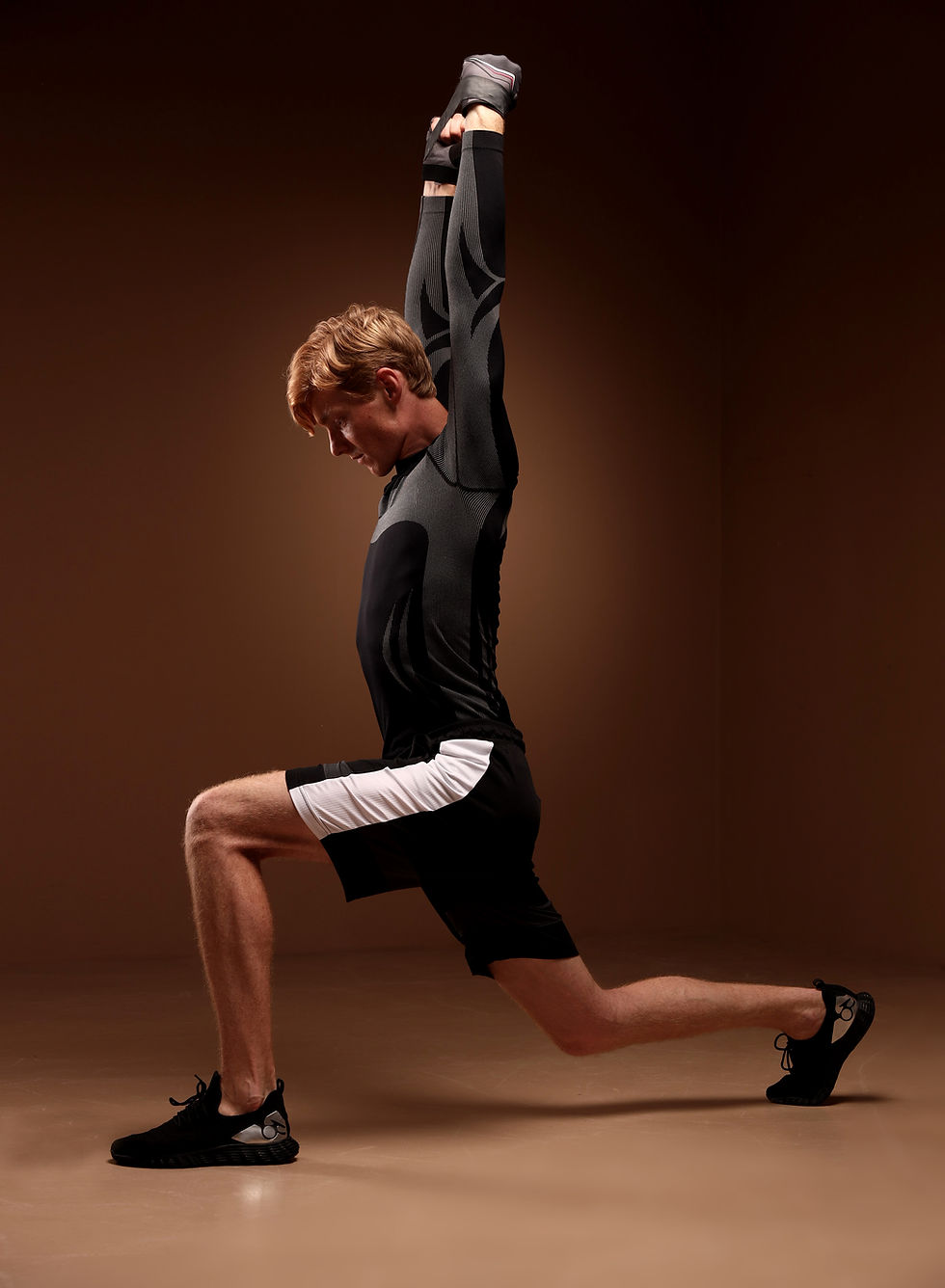Understanding Achilles Tendon Pain
- noelle822
- 41 minutes ago
- 4 min read
Achilles pain is a common complaint among all people, particularly among runners, weekend warriors, and people who are on their feet for long periods. Whether it comes on gradually or after a sudden injury, pain in the Achilles tendon can limit mobility, affect your daily activities, and if left untreated it can lead to chronic issues. In this blog we will discuss the basic anatomy of the Achilles tendon, common injuries, and explain how physical therapy can play a key role in recovery.
What Is the Achilles Tendon?
The Achilles tendon is the thick, fibrous band of tissue connecting your calf muscles (gastrocnemius and soleus) to the heel bone (calcaneus). It is the strongest and largest tendon in the body and plays a critical role in walking, running, jumping, and climbing stairs/going up hills. When you push off the ground, like sprinting or going up on your toes, the Achilles tendon helps transmit force from the calf to the foot to help propel you forward.During these motions, the Achilles tendon is under the highest loads in the body with the load up to ten times the body's weight. Although it is the strongest tendon in the body, its is prone to injury and is the most commonly ruptured tendon. ¹

Common Achilles Injuries
Achilles injuries can range from mild overuse problems to complete ruptures. We will discuss some of the most common injuries we see as physical therapists.
Achilles Tendinitis
What is it: Inflammation in the tendon that is often due to overuse
Cause: Overuse or increased activity too quickly.
Symptoms: Gradual onset of pain, stiffness (especially in the morning), tenderness a few centimeters above the heel. Inflammation that can be see with redness or tendon feeling “warm”.
Common in: Runners, hikers, and athletes with poor flexibility or improper footwear.
Achilles Tendinosis
What is it: Chronic thickening of the tendon and evidence of degeneration of tendon without an acute injury or signs of inflammation.
Cause: Micro-trauma/Chronic degeneration of the tendon due to untreated tendinitis or aging.
Symptoms: Thickened tendon, ongoing pain, decreased strength.
Key difference: Unlike tendinitis, tendinosis is non-inflammatory and degenerative.
Achilles Rupture
What is it: On a spectrum from partial thickness to complete thickness tear of the tendon.
Cause: Sudden forceful movement (e.g. sprinting or jumping), often with poor warm-up.
Symptoms: Sudden sharp pain, a popping sound, inability to push off the foot.
More common in: Individuals between ages 40–50, especially those returning to sports after inactivity. Male to female ration 2:1. ¹

Physical Therapy for Achilles Pain
Physical therapy is one of the most effective non-surgical treatments for Achilles tendon issues, especially for tendinitis and tendinosis. If tendonosis is left untreated you have a higher chance of rupturing your tendon due to the degeneration over time. The main goal of physical therapy is to help: reduce the pain and inflammation, restore the mobility and flexibility of the ankle/foot, rebuild the tendons strength, correct any biomechanical issues, and prevent reoccurrence of it happening.
Let’s discuss how physical therapy can help and tip/tricks:
1. Eccentric Strengthening: This is very effective for tendinosis, due to the tendon requiring loading for healing properties and blood flow.The focus of eccentric exercises is to control the lowering of the heel to stretch and lengthen the tendon, and example of this would be a heel drop off a step.
2. Manual Therapy: This is a hands on technique to help reduce the stiffness in the calf, ankle and foot. Most of the time, one the loading causes for achilles tendon pain is due to lack of motion through the foot and ankle joint along with tightness through the calf. Manual therapy can help improve circulation and joint and tissue mobility.
3. Stretching Exercises: This may seem pretty basic but a gentle calf stretch (with the knee straight and bent) will help to improve the flexibility of the calf. As we stated earlier, the Achilles tendon is a continuation of the calf muscles. If the calf is tight it can affect the overall flexibility of the Achilles tendon. This is important for both prevention and recovery.
4. Activity Modification: Achilles tendon issues can come on from doing “too much too soon” or from prolonged time on your feet. By temporarily reducing or modifying high impact activities (like running or jumping) can help with pain and swelling. Consider switching to cross training activities like cycling or swimming.
5. Footwear & Orthotics: This is typically a temporary fix to help off load the tendon while it is aggravated/inflamed. You want to get to the bottom of the real issue as to what is creating your achilles pain (biomechanics, strength deficits, tightness/mobility issues). Your physical therapist might assess your shoes and suggest a change. Heel lifts or orthotics are sometimes needed to help reduce the strain on the tendon initially.
Achilles pain is not something you have to live with. Whether it is a recent acute injury or a chronic issue, physical therapy offers a proven path to recovery. Understanding the injury, taking appropriate rest if needed, and following a rehab plan can get you back to walking, running, and moving pain-free. We here at Precision and Performance Physical Therapy can help you get back on track if you have any concerns!
Hope this helps!
Dr. Noelle O’Hara, DPT
References:
.jpg)




Comments